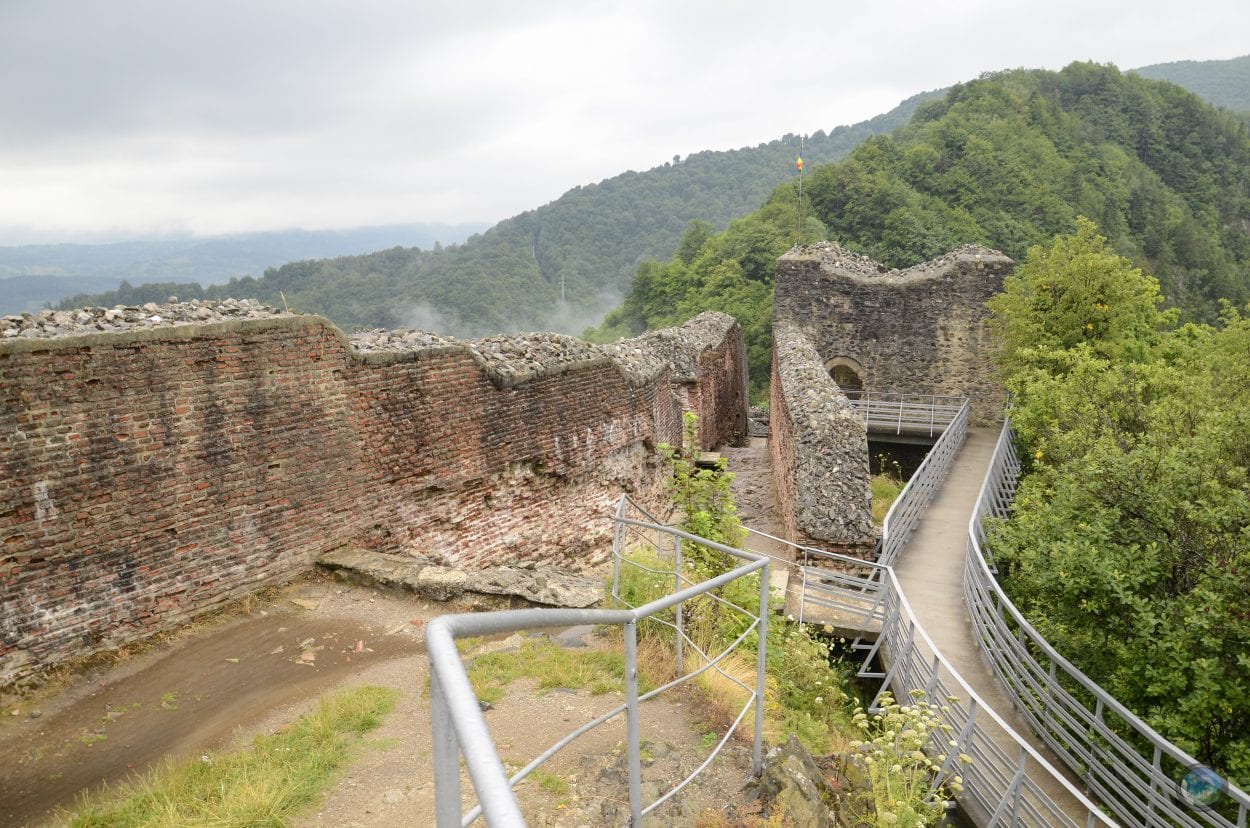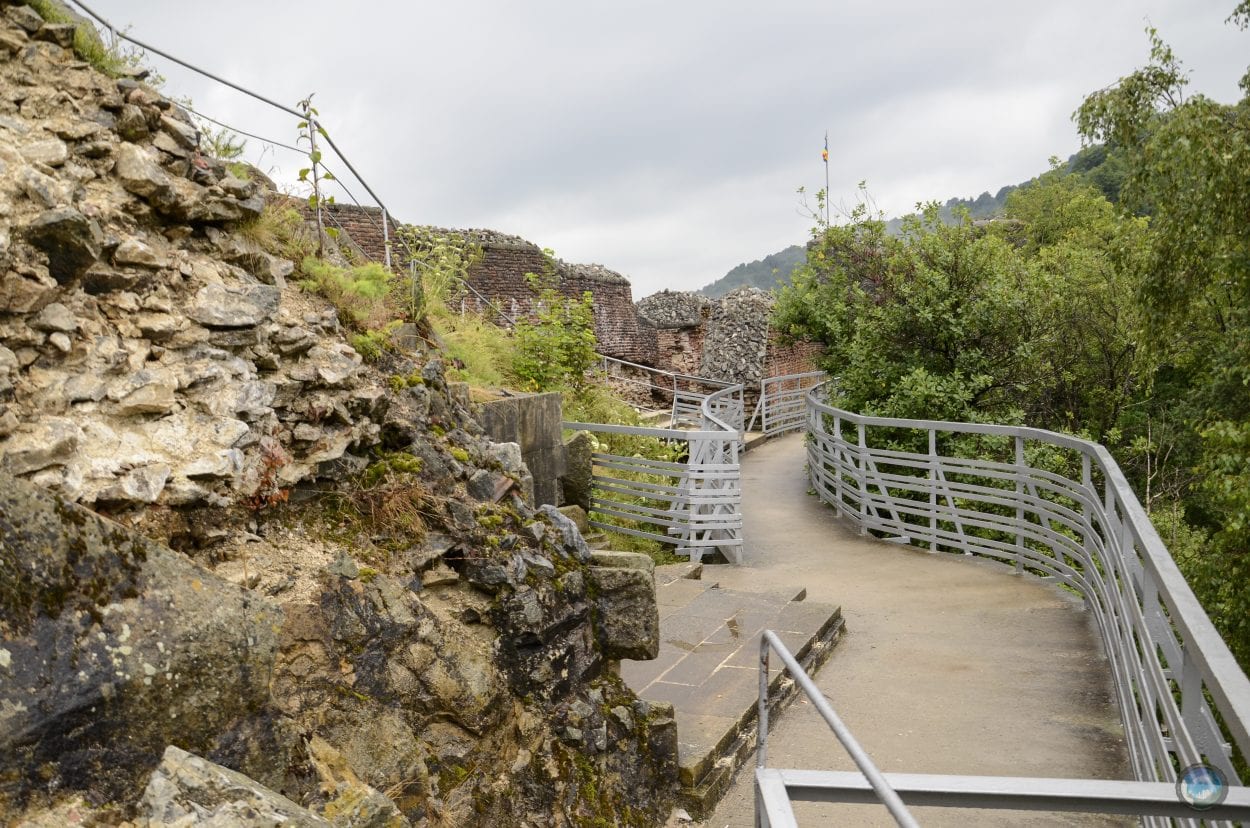Poenari Castle is the ruins of a mountain top citadel on the plateau of Mount Cetatea in present-day Romania.
Various castles such as Bran Castle have been associated or inspired the story of Bram Stoker’s Dracula, but Poenari Castle (which has no basis in Stoker’s book with “Castle Dracula”) was the seat of Vlad the Impaler, also known as Vlad Tepes or Vlad III Dracula and the Voivode of Wallachia.
Scholars connected Stoker’s Dracula with Vlad through a matching biographical namesake, along with shared similarities in their personal clashes with the neighbouring Ottoman Empire (although this was contested by Stoker’s son, Irving Stoke).
Vlad III was the second son of Vlad Dracul, (a member of the Order of the Dragons called the Drăculești), Vlad III and his brother were known as “Dracula”, translated as “son of Dracul”.

During his conflict with the Ottoman’s, Vlad impaled 23,844 Turkish prisoners and is said to have killed between 40,000 to 100,000 European civilians (political rivals, criminals, and anyone that he considered “useless to humanity”), mainly by impaling.
Poenari Castle was first constructed during the 13th century, possibly for the first emperors of Vlachs and became the main citadel of the Basarab rulers (a principal family of Wallachia).
During the 15th century, Vlad III rebuilt the fortress to serve as one of his primary residents and to control the access through the mountains by utilising the natural defensive position overlooking the Arges River.
The castle comprised of an elongated design that was accessed via a single portal using a drawbridge. The interior consisted of a square keep with a walled courtyard and a dungeon for Vlad’s many prisoners.

The outer walls measure between 3-5 metres in thickness and contain three circular towers on the southern wall, and a singular square tower defending the northern wall that was supported by the keep.
Despite Vlad’s death in 1476 whilst fighting against Basarab Laiotă (Voivode of the principality of Wallachia who succeeded Vlad), the castle continued to be occupied for the following two centuries, but was eventually abandoned and left to ruin by the 17th century.
Read about the life of Vlad III Dracula – Click Here
Header Image Credit : Nata Mostova – CC BY-SA 4.0





